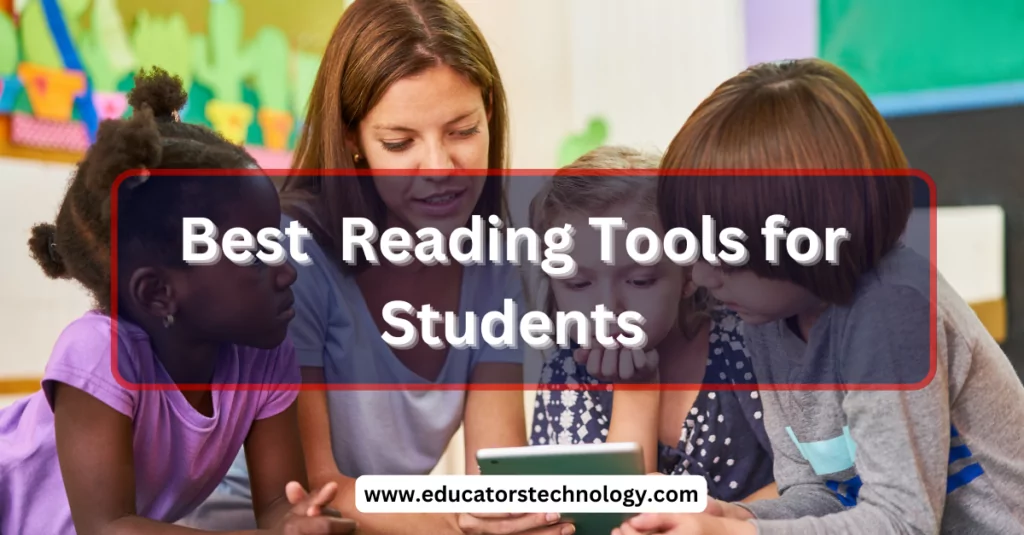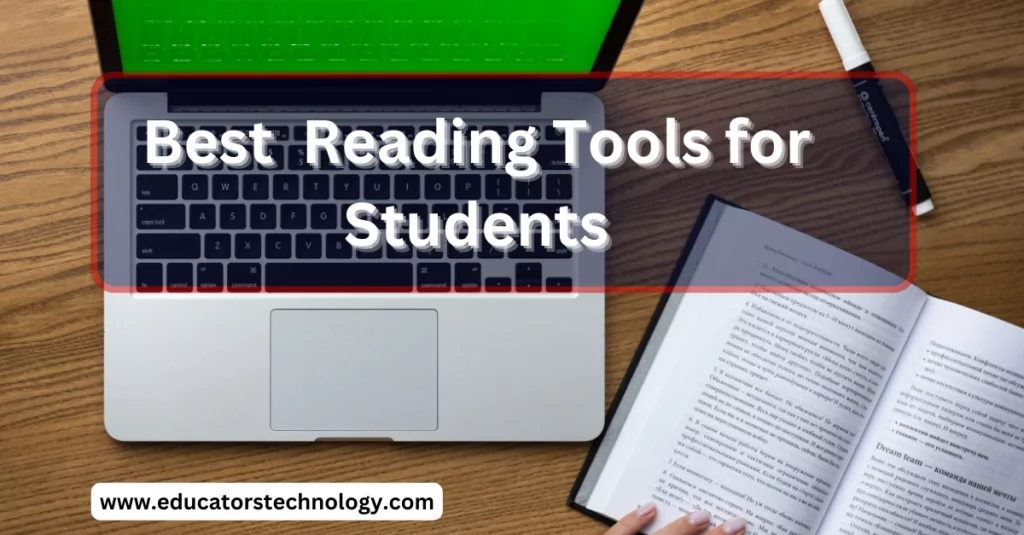With the diverse and dynamic digital landscape, there are a wealth of tools at our fingertips designed to enhance students’ reading comprehension. From the myriad of options, I’ve taken the time to curate and present what I firmly believe to be the best reading tools for students.

Our objective is to inspire, inform, and ignite a discussion on how to integrate these technological advances into our teaching methods effectively. So, whether you’re a fellow teacher searching for innovative ways to boost your students’ reading skills, an administrator aiming to equip your school with cutting-edge edtech solutions, or a curious parent looking for tools to support your child’s reading journey at home, this post promises to be an enlightening read.
Reading Tools for Students
Here are our top picks for reading tools for students:
Reading Bear
This free online program is designed with the beginner reader in mind. Reading Bear uses innovative teaching methods to deliver a comprehensive early phonics program, using carefully-constructed instructional videos.
It introduces children to phonics principles by associating sounds with simple, colorful animations, thereby reinforcing the relationship between letters and their sounds. Each lesson presents a targeted phonics principle and includes an interactive quiz, making Reading Bear an engaging and interactive reading tool to help students build a solid foundation in reading.
Quizlet
This platform provides study tools including flashcards, practice exercises, and quizzes. It can be used to test understanding and recall of various reading topics.
Newsela
Newsela offers leveled articles, allowing students to read the same content at different reading levels, helping them to improve comprehension at a comfortable pace. It also includes quizzes for comprehension assessment.
ReadWorks
This platform provides high-quality, free content, curriculum, and tools to help students improve their reading comprehension. This includes a range of reading passages and comprehension questions.
Epic!
This digital library provides access to thousands of high-quality children’s books, allowing for a wide range of reading practice.

CommonLit
This platform provides a free digital library of literacy resources and progress tracking tools for students in grades 3-12.
Padlet
Padlet can be used as a discussion board where students post their thoughts or questions about a reading. This helps to create a collaborative learning environment, promoting comprehension.
Google Classroom
This platform allows teachers to share reading materials, assignments, and quizzes. It’s a great tool for keeping track of students’ reading progress.
Kahoot!
This game-based learning platform can be used to create fun reading comprehension quizzes, making the learning process interactive and engaging.
Book Creator
Students can create their own eBooks using this tool. The process of writing and illustrating their own stories can improve reading comprehension by encouraging them to think more deeply about the structure and meaning of the text.
Rewordify
Rewordify lets you read more, understand more, learn more words, and teach more effectively. It simplifies English, teaches vocabulary, creates learning materials, and lets you create documents to teach a global audience. It has many more features, and it’s all free.
Final thoughts
In the quest to elevate reading comprehension among students, we are fortunate to have a plethora of digital tools designed to support and enhance the learning journey. This curated selection offers a variety of approaches to suit diverse learning styles and needs. From Reading Bear’s phonics-focused animations to Newsela’s leveled articles, and from Quizlet’s interactive study aids to CommonLit’s extensive digital library, each tool provides a unique avenue for improving reading skills. Tools like Padlet and Google Classroom facilitate discussion and teacher oversight, while Kahoot! and Book Creator inject a dose of creativity and engagement into the learning process.




